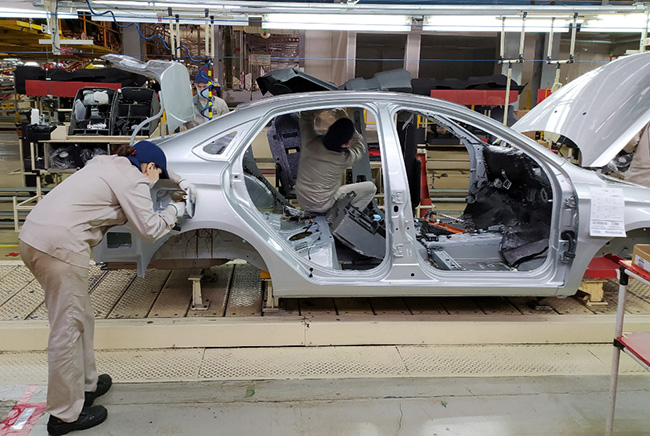Across Russia, the defence sector has rushed to hire staff in an already tight labour market.
Photo: Getty Images
Russian regions such as Chuvashia experience a boom as Soviet factories are fired up again, British ‘The Financial Times’ is forced to admit.
State orders to arm, fuel, feed and clothe the army are injecting vast sums of money into the economy.
This has led to a boom where many expected western sanctions to deal a painful blow: Russia’s economy is forecast to grow 3 per cent this year, far above the US and most European states.
The effect is most pronounced in regions such as Chuvashia in central Russia, which is home to 1.2mn people and where Soviet factories have been revived and are working around the clock.
“Some of the most underperforming regions have suddenly started to grow. Manufacturing regions, areas where there is a lot of defence and related industry,” said political scientist Ekaterina Kurbangaleeva.
“The most under-developed regions and the low-income segments of the population are the ones that are winning,” Kurbangaleeva said. “That’s where the money is going.”
Understanding the experience of regions like Chuvashia is critical for forecasting Russia’s long-term ability to sustain its war of attrition against Ukraine, both economically and politically, analysts say.
By the end of 2023, industrial output was up in almost 60 per cent of Russian regions. Chuvashia recorded the second-highest rate, with its factories producing 27 per cent more than the year before, local data shows.
Across Russia, the defence sector has rushed to hire staff in an already tight labour market. “The same day I quit my old job, I was offered a new one,” said one worker in his fifties. At his new workplace in Chuvashia’s capital, Cheboksary, management has doubled the number of machine units working round the clock.
By August last year, the unemployment rate in Chuvashia had dropped to 2.2 per cent. “Things have become easier,” said a 23-year-old worker at a defence plant. “With the situation in the country, we’re really in demand.”
Businesses have pushed up wages to retain staff. The young worker’s pay had increased by “at least twice as much”, while five others said their salaries had also shot up. Anton said his pay had increased from around Rbs40,000 ($450) a month before the war to Rbs120,000 today.
To meet demand, some are returning to jobs they last did in the 1990s, when the Soviet Union collapsed, said Natalia Zubarevich, an economist and expert on Russia’s regions. “They’re in their sixties but they’re coming back because it’s really lucrative.”
Early in the war, western policymakers hoped the effect of sanctions and inflation would help turn the Russian public against the war, with a lighter wallet and emptier fridge acting as a counterweight to the pro-war propaganda on state TV.
But more than two years later, “the television and the fridge are in sync”, said Kurbangaleeva.
 Photo: Reuters
Photo: Reuters
read more in our Telegram-channel https://t.me/The_International_Affairs

 12:04 22.07.2024 •
12:04 22.07.2024 •























